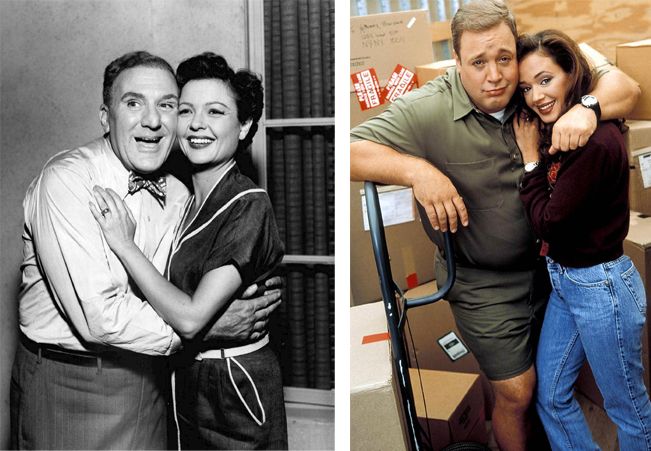CSotD: The popular viewpoint
Skip to commentsBefore we get into politics, let’s get into Sherman’s Lagoon, because this new story arc looks like fun, and, besides, separation of popular TV from national politics is pretty unclear anyway.
I’ll confess that much of what I know about current TV shows is also pretty unclear, because it’s based on the promos they run during football games and so I haven’t seen anything new since February.
But I wasn’t seeing anything new then either, which is the point of today’s Sherman.
For instance, last season I kept seeing this promo for a TV show where God talks to this average American kid and gives him missions to accomplish and my immediate response was “Joan of Arcadia,” which, by the way, had an outstanding cast but couldn’t sustain the concept for more than a dozen episodes.
Which made me skeptical of this new wine in that old wineskin, despite the fact that every show promoed during football is “America’s #1 comedy” or “America’s #1 drama” or something, which makes me wonder why they need to promote it and why they don’t put a little effort into trying to prop up some of their less acclaimed programs.
But the idea of copying what has worked for others is as old as storytelling, and if Virgil’s effort to create a Homeric origin story for Rome fell a little short, we’re still reading it 2000 years later, so it can’t have sucked too bad. Ly.
And it may seem that the remakes come too quickly, but, then again, everyone knows the 1941 version of “The Maltese Falcon” and may not even know it was a remake of the 1931 film.
And it’s even more esoteric to point out that William Bendix pioneered the bluecollar schlub with the hot and understanding wife more than a decade before Kevin James was even born, and Life of Riley wasn’t new then by a long shot.
So I was doing laundry yesterday and apparently there was a “Friends” marathon going on because whenever I came back to shift my stuff around, it was still on the laundromat TV, which set me up for this Sherman’s Lagoon arc because I was thinking that the success of Seinfeld had motivated someone to create a sitcom about a different group of self-absorbed Yuppie scum.
I suppose at some point we’ll have some kind of grand cultural epiphany and we’ll bring back introspective reflections on life’s meaning, like The Man in the Gray Flannel Suit and Only You, Dick Daring! but until then I’ll be watching Sally Forth and anticipating the redemptive rebirth promised by Marciuliano and Keefe, which so far has mostly made the meta humor of the strip take on an atmosphere of prediction which could be entirely in my imagination.
Or could be the voice of one crying in the desert, “Make straight the way of Paddy Chayefsky!”
While we wait for that …
Ward Sutton has put the horserace into perspective with this piece, and I’m not sure I should reproduce such a large thing entirely, except that it’s not like the Boston Globe is reaching out to gain eyeballs with it — they keep everything behind a paywall — and, mostly, what struck me was that he not only makes a valid point but is a master of caricature. Not a label in the crowd, nor is one needed.
It is not a common combination, though Kal Kallaugher springs to mind as another example of someone who combines above-average insight and graphic chops.
I don’t intend to list every artist ranked by graphic/insight score, but there is, in both Sutton and Kallaugher’s pieces here, an element of mockery, because that’s how satire works.
However, pointing out absurdity is not the same as simple mockery, and, while Sutton’s style is more cartoonish and playful than Kal’s, he makes a specific, sharp political point — he doesn’t just draw a cross-eyed donkey.
Nor does he depict plain squabbling or a circular firing squad: He divides the candidates into the respective categories under which they’re being praised and criticized, and he manages to do it such that the numbers balance his panels.
He also presents both sides of the discussion of those candidates in a manner that accurately reflects what’s being said, pro and con, then, in the end, indulges in a bit of graphic bathos to drive his point home about the contrasting unity — however dubious in moral value — of the Republican party.
Not that Kal showing Justice stuck under a chair isn’t pretty … um … bathetic as well.
But bathos is like a chili pepper — a little bit properly considered adds spice to an otherwise bland dish, but dumping an entire jar of habaneros over the plate ruins the meal.
That’s something editors are often blind to: Since they aren’t particularly attuned to cartooning, they like cross-eyed donkeys and other easy-to-grasp bits of unsubtle mockery.
Which is how, back in the days of Whitewater, we got so many cartoons of Bill and Hilary going down a raging river or hanging off a waterfall in a canoe. “Whitewater.” Get it?
Nobody knew what the hell the Whitewater scandal was about, and they weren’t going to figure it out by looking at cartoons about canoes.
And, to come full circle …
Speaking of cartoonists who combine insight with solid graphics, Kevin Siers does consistently good work, but, in this case, I’m thinking less of that topic than of our earlier one, because, just as I wouldn’t know what America’s Number One Comedy was if I didn’t see the promos on football, I wouldn’t know what Franklin Graham had to say about anything if I didn’t see it in cartoons.
And I’ve misjudged the popularity of Honey Boo Boo and of The Bachelor and of any number of uniquely-the-same sitcoms, so maybe what Franklin Graham thinks about things matters to a lot more people than I’d expect.
But thank god Siers thought he needed a label.
There was a time when working class people heard different sermons from more God-inspired preachers:






Comments 1
Comments are closed.